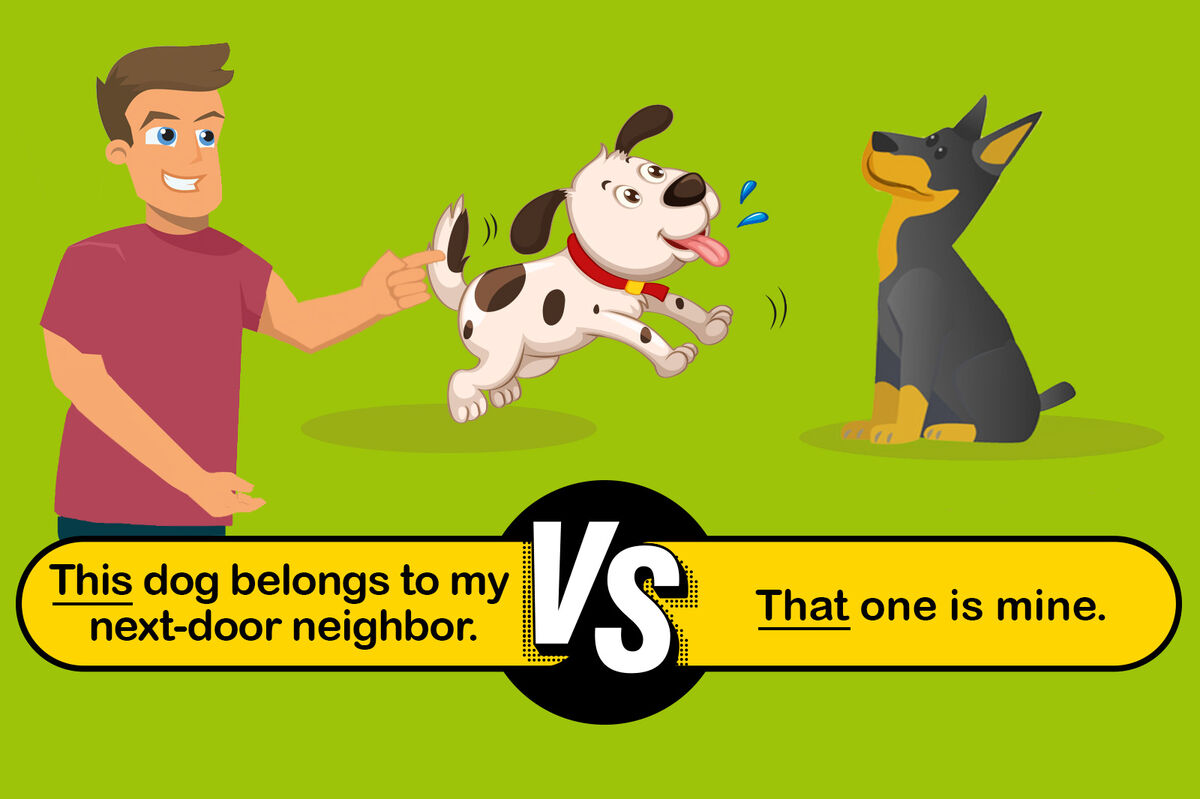
You know how to use articles like a, an, and the. But what about words like this and that? Or these and those? Read on for examples of sentences that use this or that, and with phrases like these are and those are.
This vs. That, These vs. Those
Telling the difference between these words may seem easy for English speakers. But do you know the various situations where each is correct? This and its plural version these have slightly different meanings and uses from that and those. So, where do we use this, that, these, and those? It has to do with the items you're describing.
Distance and Number
One difference between these words lies in distance and number. If an item is close to you, you use the word this. If there is more than one item that is close to you, use these. This rule applies to time as well: current events use this. For example:
- This wedding was beautiful.
- Stop at this red light.
- Did you make these cookies?
- These children are very well behaved.
When something is not very close to you, use that. Just like in the first example, use those when more than one thing is far away from you.
- Let’s go to that new restaurant across town.
- That trial was almost 20 years ago.
- Those girls over there are talking about you.
- Are you going to buy those shoes?
Introducing or Identifying People
Another way this/these and that/those are different are in introductions. When you want to introduce someone to another person, you use this (or these for more than one person). You also use this when identifying yourself on the telephone. Check out these example introductions:
- Person-to-Person: Mom, this is my girlfriend, Mariana.
- Phone Introduction: Hello, this is Johan. May I speak to Mark please?
- Group Introduction: These are my teammates Pearl, Yvonne, and Katie.
You would typically only use that or those when talking to someone about another person. For example:
- See that man? That’s my history teacher, Mr. Samford.
- That barista usually adds free espresso shots to my latte.
- Those are the police officers who helped me yesterday.
- Do you know those kids?
Separating Items or Groups
When you are describing two groups of people or things, you can use this and that (or these and those) to differentiate between them. For example:
- This dog belongs to my next-door neighbor. That one is mine.
- I’ve already seen this movie. Let’s watch that one.
- These crackers are stale, but those ones are still good.
- Did you order these plates or those plates?
In some cases, one item may be closer to the speaker than the other. But in others, this and these are simply the first items mentioned, and that and those are in the second group.
Demonstratives
This, that, those, and these are known as demonstratives. But are they demonstrative pronouns or demonstrative adjectives? The answer is both – depending on how you use them in a sentence.
Demonstrative Pronouns
Like other pronouns, demonstrative pronouns stand in for nouns. They “demonstrate” which item the speaker is talking about. Demonstrative pronouns can replace a noun phrase, which is a noun + modifier, or identify an object. For example, read these sentences:
- The perfume I’m spraying smells nice.
This smells nice. - The day I scored a touchdown was the best day of my life.
That was the best day of my life. - Hand the train tickets in my hand to the conductor.
Hand these to the conductor. - I wouldn’t eat the raisins that have been in my pantry for a year.
I wouldn’t eat those.
Remember: Use this, that, these, and those to replace objects in noun phrases that describe objects only. Pronouns for people include he, she, and they.
Demonstrative Adjectives
You’ve learned that adjectives are words that describe or modify nouns. When you use this, that, these, and those to modify nouns, they’re known as demonstrative adjectives. You are talking about this dress or that dog, not another one.
While demonstrative pronouns replace the entire noun or noun phrase, demonstrative adjectives come before a noun. They’re helpful when eliminating the entire noun phrase makes the sentence confusing. For example:
I love your idea to share a hot wings appetizer.
“Your idea to share a hot wings appetizer” modifies the noun “idea.” If you replace the entire noun phrase, it creates this sentence:
I love that.
While technically correct, the sentence is confusing. Does the speaker love the idea, or do they just love hot wings? In this case, modifying the noun rather than replacing it can be helpful.
I love that idea.
The demonstrative adjective that makes the sentence easier to understand. Here are some examples of sentences with demonstrative adjectives.
- This soup tastes really good.
- I’d like to buy that jacket.
- These pencils need to be sharpened.
- Did you make those cream puffs?
Because this, that, these, and those are supposed to clarify your nouns, it’s best to use them correctly. When in doubt, read it out; if it sounds right, it probably is.
More Demonstratives Practice
Have you got the hang of it? If you’d like more practice, test your knowledge with a demonstrative adjectives quiz. You can also take a look at some demonstrative pronoun worksheets that are sure to challenge your grammar skills.